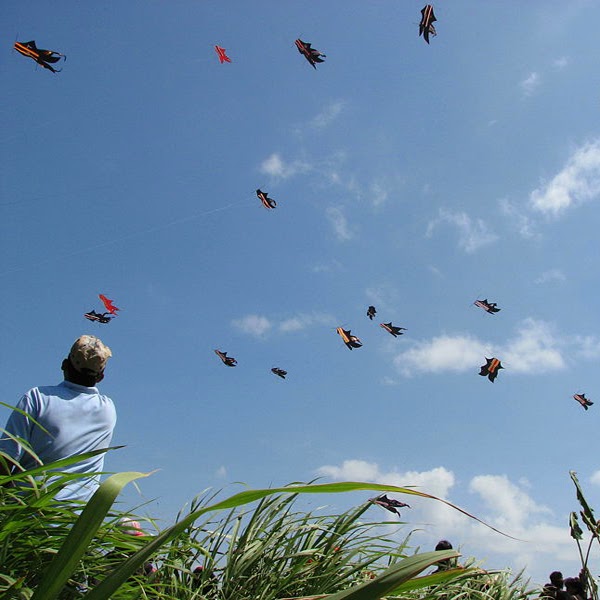
Jalan Danau Tamblingan, the main street in Sanur, has a number of outlets for car, motorbike and bicycle rental. A large number of metered taxis patrol the streets looking for passengers. Local bemos run with some regularity up and down both Jalan Danau Tamblingan and Jalan Danau Poso. Sanur is also a great place to walk. Distances are not large, the streets are relatively quiet, and there is a splendid, paved beach front path which runs the whole length of the district.
 Sanur's splendid paved beachfront cycle-path stretches some 5 kilometres from the Jalan Mertasari area in south Sanur, north to the main beach at Jalan Hangtuah. This makes for a lovely scenic bike ride, especially in the early morning. Some bikes are better maintained than others so you might want to test your hire-bike close to home for a while in case the pedals have a tendency to fall off.
Sanur's splendid paved beachfront cycle-path stretches some 5 kilometres from the Jalan Mertasari area in south Sanur, north to the main beach at Jalan Hangtuah. This makes for a lovely scenic bike ride, especially in the early morning. Some bikes are better maintained than others so you might want to test your hire-bike close to home for a while in case the pedals have a tendency to fall off. At the northern end of Jalan Pungutan, just before it hits Jalan Danau Tamblingan, there is an art market, sometimes referred to as Sindhu Market. This is a one stop shop for all manner of Balinese handicrafts, sarongs, t-shirts and knock-offs such as sunglasses. A similar set up can be found at beachfront Art Market at the end of Jalan Hangtuah. Take the foot path leading north which weaves through a maze of stalls and the odd cafe.
Other places of interest & special events in Sanur
- International Kite Festival, Padang Galak beach (just north of Sanur, east off the main Jalan Ngurah Rai bypass). The annual international kite festival takes place here every July. Traditional Balinese giant kites up to 10 metres in length are made and flown competitively by teams from different villages around Bali. The origins of this event are as a festival intended to send a message to the Hindu Gods to create abundant crops and harvests. Aside from the actual organised festival, from June through to August each year, visitors will see many giant kites being flown in this area.
- Le Mayeur Museum, This is the former home of noted Belgian impressionist Adrian Jean Le Mayeur, which is now a museum dedicated to his works. Le Mayeur arrived in Bali in 1932 and soon immersed himself in the culture of the island, and married a noted Balinese Legong dancer. Much of the house stands just as it did when he died in 1958, and apart from viewing his works, visitors will gain an insight into what it must have been like to be one of Bali's very first expats. The whole place is in need of some maintenance, but this remains one of Bali's true hidden treasures.
- Mangrove Information Centre (MIC), Visit the well appointed Mangrove Information Centre set in the huge 600 hectare mangrove forest which fringes the east coast south of Sanur. There are two different boardwalks through the mangrove forest. This centre is doing great work in educating local schoolchildren as well as visitors, about the importance of mangrove forests. A good place to spend half a day for adults and children
- Pura Blanjong (Blanjong Temple), The most notable temple in Sanur which contains a major, important inscription on a stone pillar called the Prasati Blanjong. The inscription tells of a Javanese king who visited Bali in the 10th century and installed what was probably Bali's first formal government. This is Bali's oldest known artifact.
- Serangan Island Turtle Conservation Centre (Turtle Island), Visit the Turtle Conservation and Education Centre here and learn about current conservation initiatives. This island used to be the centre of the Balinese trade in turtle meat until the practice was banned.







